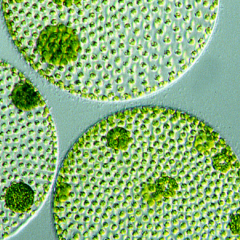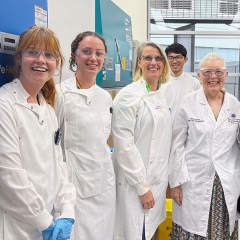Queensland researchers have found that sudden “chromosomal catastrophes” may trigger a third of oesophageal tumours, the fastest rising cancer in Australia.
Dr Nic Waddell, who led the study with Professor Sean Grimmond at The University of Queensland’s Institute for Molecular Bioscience, said the research was based on genome-wide sequencing of 22 patients with oesophageal adenocarcinoma (OAC) from three Brisbane hospitals.
“In 32 per cent of patients there had been a catastrophic event that damaged the DNA, which resulted in highly-mutated and rearranged genomes, and we confirmed this finding in another 101 patients,” Dr Waddell said.
“In all patients there was evidence of genetic scarring or ‘footprints’ of damage to the DNA in the tumour cells.
“These findings have given us an important clue as to how these tumours might have eventuated.”
Project leader Associate Professor Andrew Barbour, from UQ’s School of Medicine, said OAC had one of the poorest outcomes of all solid tumours, with only 14 per cent of patients surviving five years.
He said the catastrophe showed that when chromosomes, the genetic building blocks of human cells, shatter they can rearrange in a way that a specific gene could be turned on or off.
“Such events could drive cancer in one cell, setting off a chain reaction that results in the tumour,” Dr Barbour said.
“Removing the tumour is their best hope, but fewer than 50 per cent of patients are diagnosed early enough for surgery.
“If further research can identify what triggers the catastrophic event, it opens the way for patients at risk to take measures that may prevent tumours from developing.”
He said the most significant risk factor for OAC was the pre-malignant lesion known as Barrett’s oesophagus.
“Patients with Barrett’s are routinely monitored for development of malignant tumours but reflux, smoking and obesity are other risk factors, and men account for eight in every nine OAC cases,” Dr Barbour said.
“The number of patients diagnosed with oesophageal cancer has doubled in the past 20 years and is expected to double again in the next two decades.”
The study was funded by the NHMRC and follows a previous grant bringing together Australia’s major OAC scientists in a Centre of Research Excellence at QIMR Berghofer, where Dr Waddell is now based. She continues her collaborations with UQ as an IMB Affiliate.
The study also involved scientists from Adelaide’s Flinders University, the University of NSW and the Peter MacCallum Cancer Centre.
The paper has been published in the scientific journal Nature Communications.
UQ media: Bernadette Condren, Faculty of Medicine and Biomedical Sciences Media Manager, +61 7 3346 53009, b.condren@uq.edu.au
QIMR Berghofer media: Kim Lyell, Senior Communications Coordinator, +61 7 3845 3699, 0458 650 200, kim.lyell@qimrberghofer.edu.au



